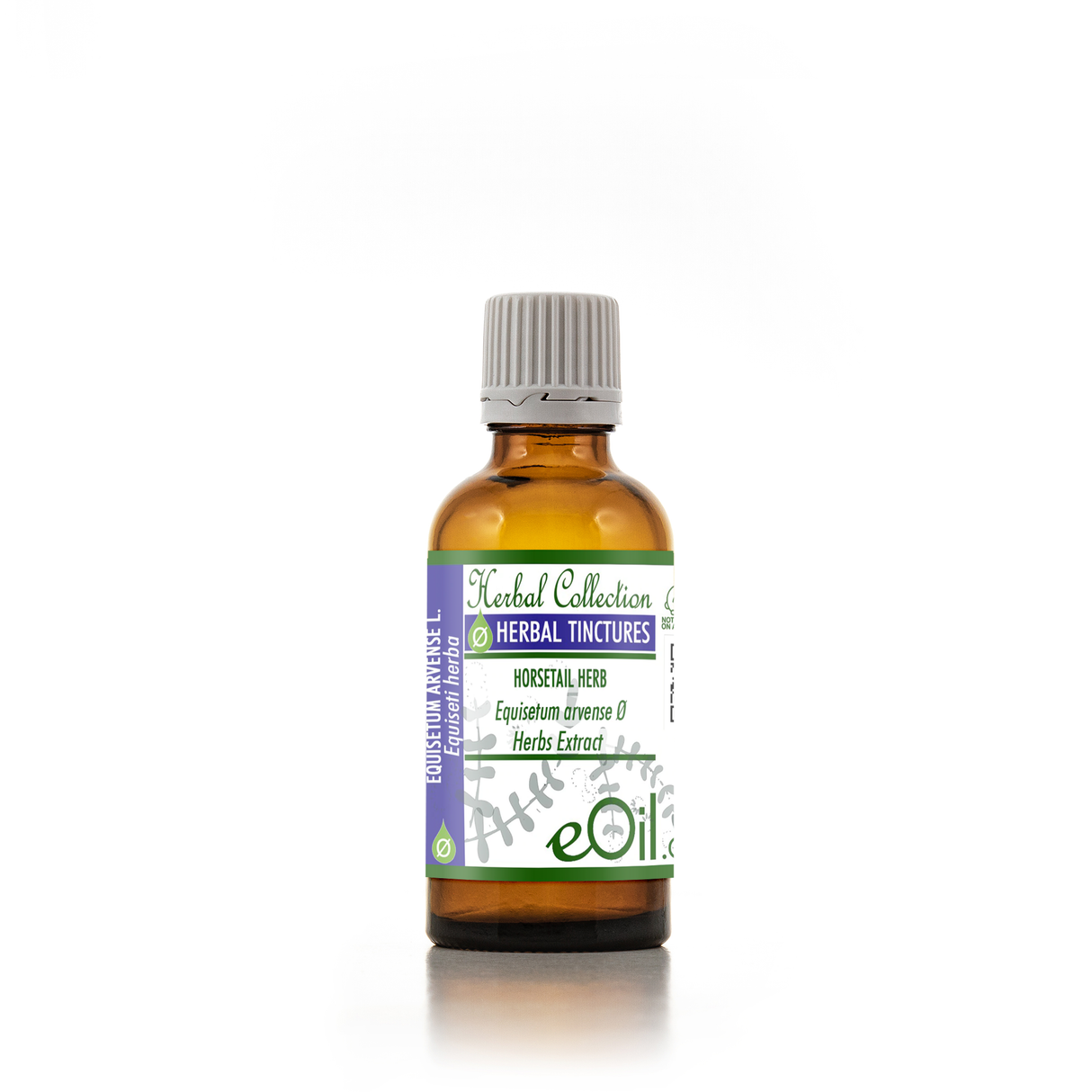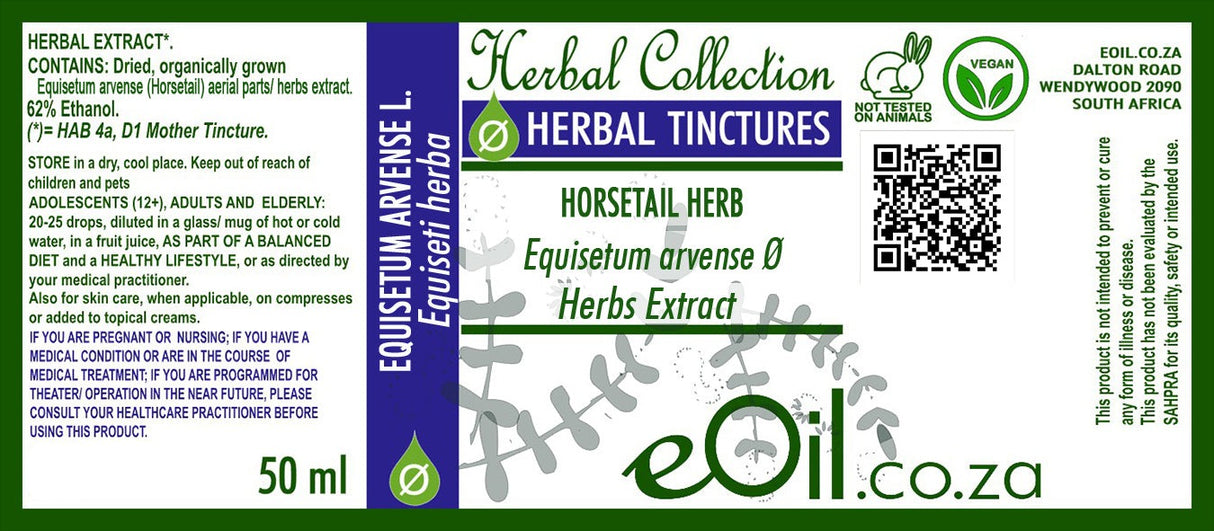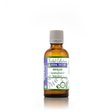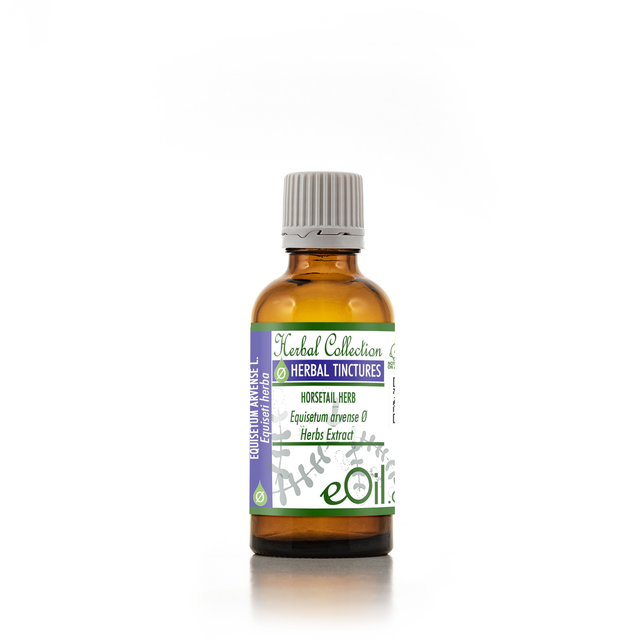Horsetail - Liquid Herbal Extract
Horsetail - Liquid Herbal Extract - 50 ML is backordered and will ship as soon as it is back in stock.
Description
Description
Understanding Mother Tinctures & Glycerines
Horsetail Liquid Herbal Extract tincture is made from Equisetum arvense, a plant naturally rich in silica and minerals.
This tincture supports traditional wellness routines for hair, skin, nails, bone health, and general vitality. Horsetail’s unique plant compounds make it a valued addition to daily adult herbal practices.
Ethically sourced, pure, and free of artificial additives.
TRADITIONALLY USED FOR
Horsetail tisane, also known as horsetail tea, is an herbal infusion made from the horsetail plant (Equisetum arvense). This herb has several potential health benefits and uses:
Health Benefits and Uses
Promotes Hair, Skin and Nail Health
Horsetail contains high levels of silica, which is believed to strengthen hair, skin, and nails
It may:
- Reduce hair fragility and improve shine
- Strengthen fingernails and reduce brittleness
- Improve skin quality by fighting free radicals that cause premature aging
Supports Bone Health
The silica and mineral content in horsetail may help improve bone health by:
- Promoting bone density and formation
- Enhancing collagen synthesis
Improving calcium absorption
Acts as a Natural Diuretic
Horsetail tea has diuretic properties that can:
- Increase urine output
- Help eliminate toxins from the body
Potentially aid in weight loss by reducing fluid retention
Promotes Wound Healing
When applied topically, horsetail may:
- Accelerate wound healing
- Reduce inflammation and swelling
Improve wound redness and discharge
Supports Urinary Tract Health
Due to its diuretic and anti-inflammatory effects, horsetail tea may:
- Help treat urinary tract infections
- Alleviate symptoms of cystitis or nephritis
Assist in flushing out bacteria from the urinary system
How to Prepare and Use
To make horsetail tea:
- Use 1-2 teaspoons of dried horsetail per cup of boiling water
- Steep for 5-10 minutes
- Strain and drink up to 3 cups per day
It's important to note that while horsetail tea has potential benefits, it should be used in moderation and under the guidance of a healthcare professional.
Prolonged use or high doses may lead to side effects. Additionally, horsetail tea should not be used as a substitute for prescribed medications without consulting a doctor.
INFORMATION
Source : http://www.wikiphyto.org/wiki/Prele_des_champs
Reference on http://www.wikiphyto.org
Translation in English by Google Translate (go to the page of the source linked | on Chrome cellphones go on the 3 dots on the top right and select translate in your preferred language | on laptop right click your mouse and select option translate when hoovering on the page
plant name
Horsetail, Horsetail , Rattail , Foxtail , Horsehair , Horsetail ( English)
International Latin denomination
botanical family
Equisetaceae
Description and habitat
- Perennial plant of wet clay-siliceous marshy soils
- Fertile stems appearing in early spring with an oblong sporangiferous spike
- Sterile twigs have hollow stems, jointed at the nodes, fluted with 6-12 furrows
- At the nodes are inserted whorled leaves of reduced size
History and tradition
- Primitive plant whose ancestors proliferated in the primary or Paleozoic era (600-300 million years before our era) in the form of very tall trees
- Very abrasive, it was used to polish metals and wood
- The Latin name Equisetum comes from the Latin equus (horse) and seta (silk)
- The vernacular name of "horsetail" also has a Latin origin, asperella means "harsh" (in reference to the silica of the stems which made it possible to scour or polish)
- Some old works (Kervran) would have shown that organic silicon is superior to calcium for the consolidation of fractures
Parts used
- Sterile aerial parts
Dosage forms available
- Sterile stem tincture
- Fluid extract
- EPS
- Micronised powder
Usual dosages
- 1 to 3 grams of powder per day or galenic equivalents
Composition
Main components of the plant
- Mineral elements, Silicon Si-O2 (5-10%) including a soluble and organic part (water-soluble silicates and organic Silicon), Potassium in large quantities
- More than 15 flavonoids ( malonyl-glucopyranoside , protogenkwanin glucoside , isovitexin , kaempferol and quercetol glycosides )
- Phenolic acids , phenolic derivatives ( onitine and onitine-9-O-glucoside )
- Polysaccharides ( beta-glucans ) [1]
- Sterols , ascorbic acid
- Traces of alkaloids , the content of which is high in certain more or less toxic species ( Equisetum palustre )
- Low-quantity essential oil [2]
Main components of buds or young shoots
Main components of essential oil
- Hexahydrofarnesyl acetone (18.34%), cis-geranyl acetone (13.74%), thymol (12.09%), trans-phytol (10.06%)
Properties
Plant properties
- Remineralising (silica)
- Diuretic (potassium salts, flavonoids , phenolic acids ), urinary elimination of flavonoid metabolites and hydroxycinnamic acid derivatives [3]
- Improved connective tissue resistance, healing (organosoluble silicon), would stimulate osteoblasts [4] , [5] , [6] , [7]
- Anti-inflammatory and analgesic by hydro-alcoholic extract [8]
- Hemostatic
- Phenolic derivatives ( onitin and onitin-9-O-glucoside ) and flavonoids ( apigenin , luteolin , kaempferol-3-O-glucoside ), quercetin-3-O-glucoside ) are hepatoprotective and anti-oxidants [9]
- Immunomodulating [10]
- Slow and progressive decrease in hypergammaglobulinemia
- The methanolic extract shows antidiabetic activity in rats [11] , [12]
- Antioxidant, lowers blood insulin and leptin levels after a fatty meal [13]
- Antiproliferative [14]
- Growth inhibitor and apoptosis inducer on human leukemia cells U937 [15]
- Protective effect against the mutagenic power of cyclophosphamide [16]
- Antifungal activity in plant protection: horsetail manure (in decoction, then the juice is left to ferment in the open air, see nettle ) sprayed on the foliage of other plants is a preventive treatment against cryptogamic diseases (to be applied regularly to spring)
Bud properties
Properties of essential oil
- Antimicrobial ( Staphylococcus aureus, Escherichia coli, Klebsiella pneumoniae, Pseudomonas aeruginosa, Salmonella enteritidis, Aspergillus niger, Candida albicans )
Directions
Indications of the whole plant (phytotherapy)
- Remineralizing, usable in the consolidation of fractures (+++), bone fragility, post-menopausal osteoporosis, cramps and spasmophilia
- It is also used in osteoarthritis as a basic treatment (in micronized powder), in tendonitis and abarticular rheumatism
- Improves the resistance and flexibility of connective tissue, appendages (nails and hair), healing
- Basic action in polyarthritis and hypergammaglobulinaemic diseases (in TM or liquid forms)
- Renal inflammation, drainer in bacteriuria
- Hemostatic
- Cramps
- In cosmetology: prevention of wrinkles, stretch marks, cellulite, hair loss
Indications of the bud (gemmotherapy)
Specific indications of essential oil (aromatherapy)
Known or suspected mode of action
Usual formulations
- Micronised horsetail powder ( Equisetum arvense ): 150 grams
- Take a teaspoon in the morning, to be taken well mixed with one to two spoonfuls of compote, yogurt or cottage cheese [17]
Regulations
- French Pharmacopoeia list A (sterile aerial part)
- Activity recognized by the German Commission E
Possible side effects and precautions for use
- Anti-thiamine activity [18]
- A described case of liver toxicity [19]
- Contraindicated in end-stage renal failure with dialysis
- Due to its diuretic properties, horsetail can theoretically induce a hypokalaemic effect, avoid in case of concomitant intake of a hypokalaemic diuretic
- In vitro studies have shown a weak inhibition of cytochromes p450 by methanolic extracts (CYP2B6, CYP2C19, CYP2D6, CYP1A2) [23] , the inhibition of CYP3A4 seems weak in vivo [24]
- Contraindicated in progressive cancers (??)
- Neither cytotoxic nor mutagenic [16]
Bibliographic references
- Go↑ Iben Sørensen, Filomena A. Pettolino, Sarah M. Wilson, Monika S. Doblin, Bo Johansen, Antony Bacic, William GT Willats. Mixed-linkage (1→3),(1→4)-β-d-glucan is not unique to the Poales and is an abundant component of Equisetum arvense cell walls. The Plant Journal, Volume 54, Issue 3, pages 510–521, May 2008 [1]
- Go↑ Radulović N, Stojanović G, Palić R. Composition and antimicrobial activity of Equisetum arvense L. essential oil. Phytother Res. 2006 Jan;20(1):85-8. PMID 16397851
- Go↑ Graefe EU, Veit M. Urinary metabolites of flavonoids and hydroxycinnamic acids in humans after application of a crude extract from Equisetum arvense. Phytomedicine. 1999, Oct;6(4):239-46. PMID 10589442
- Go↑ Ferraz Maria Pia, Pereira Ana Catarina, Lopes Maria Ascenção, Fernandes Maria Helena. Equisetum arvense- avaliação das PossiBilidades de aPlicação na regeneração Óssea, 2008. B-Digital - Repositório institucional da Universidade Fernando Pessoa [2]
- Go↑ Costa-Rodrigues J, Cunha JA, Bessa Pereira, Lopes MA, Fernandes MH. Induced in vitro osteogenesis by Equisetum arvense. 6th Marie Curie Cutting Edge Conference Stem Cells: From the Petri dish to the clinical application. Portugal; 2008.
- Go↑ Bessa Pereira C, Vieira L, Lopes MA, Fernandes MH. Stimulatory effect of Equisetum arvense extracts on the proliferation of MG63 osteoblast-like cells. VIII International Symposium on Experimental Techniques. Portugal; 2007.
- Go↑ Costa-Rodrigues J, Cunha JA, Lopes MA, Santos JD, Fernandes MH. Bonelike®/Equisetum arvense association: in vitro osteoinductive behavior. 6th Marie Curie Cutting Edge Conference Stem Cells: From the Petri dish to the clinical application. Portugal; 2008.
- Go↑ Do Monte FH, dos Santos JG Jr, Russi M, Lanziotti VM, Leal LK, Cunha GM. Antinociceptive and anti-inflammatory properties of the hydroalcoholic extract of stems from Equisetum arvense L. in mice. Pharmacol Res. 2004 Mar;49(3):239-43. PMID 14726218
- Go↑ Oh H, Kim DH, Cho JH, Kim YC. Hepatoprotective and free radical scavenging activities of phenolic petrosins and flavonoids isolated from Equisetum arvense. J Ethnopharmacol. 2004 Dec;95(2-3):421-4. PMID 15507369
- Go↑ Gründemann C, Lengen K, Sauer B, Garcia-Käufer M, Zehl M, Huber R. Equisetum arvense (common horsetail) modulates the function of inflammatory immunocompetent cells. BMC Complementary and Alternative Medicine 2014, 14:283 (4 August 2014) Full text abstract
- Go↑ Safiyeh S, Fathallah FB, Vahid N, Hossine N, Habib SS. Antidiabetic effect of Equisetum arvense L. (Equisetaceae) in streptozotocin-induced diabetes in male rats. Pak J Biol Sci. 2007 May 15;10(10):1661-6. PMID 19086514
- Go↑ Soleimani S, Azarbaizani FF, Nejati V. The effect of Equisetum arvense L. (Equisetaceae) in histological changes of pancreatic beta-cells in streptozotocin-induced diabetic in rats. Pak J Biol Sci. 2007 Dec 1;10(23):4236-40. PMID 19086577
- Go↑ Kim, YH, Shin, KO, & Choi, KS (2016). In vitro antioxidant properties of equisetum arvense and its effects on serum lipid levels in mice fed a high-fat diet. The Korean Journal of Food And Nutrition, 29(3), 347-356.
- Go↑ Cetojević-Simin DD, Canadanović-Brunet JM, Bogdanović GM, Djilas SM, Cetković GS, Tumbas VT, Stojiljković BT. Antioxidative and antiproliferative activities of different horsetail (Equisetum arvense L.) extracts. J Med Food. 2010 Apr;13(2):452-9. doi: 10.1089/jmf.2008.0159. PMID 20170379
- Go↑ Valentina Alexandru, Daniela N. Petrusca, Elvira Gille. Investigation of Pro-apoptotic Activity of Equisetum arvense L. Water Extract on Human Leukemia U 937 Cells. Romanian Biotechnological Letters, 2007, VOL 12; Number 2, Pages 3139-3148 [3]
- ↑Go to :16.0 and 16.1 J, Ali MN, Ganaie HA, Tabassum N. Amelioration of the cyclophosphamide induced genotoxic damage in mice by the ethanolic extract of Equisetum arvense. Toxicol Rep. 2017 May 11;4:226-233. doi: 10.1016/j.toxrep.2017.05.001. eCollection 2017. PMID 28959643
- Go↑ Jean-Michel Morel. Practical Treaty of Phytotherapy, 618 pages, preface by Jean-Marie Pelt. Ed. Grancher, 2008
- Go↑ Bruneton J. Pharmacognosy, Phytochemistry, Medicinal Plants. Ed. Tec and Doc. 1997.
- Go↑ Klnçalp S, Ekiz F, Başar Ö, Coban S, Yüksel O. Eur J Gastroenterol Hepatol. 2012 Feb;24(2):213-4. doi: 10.1097/MEG.0b013e32834e7ff0. PMID 22228296
- Go↑ Baracho NC, Vicente BB, Arruda GD, Sanches BC, Brito Jd. Study of acute hepatotoxicity of Equisetum arvense L. in rats. Acta Cir Bras. 2009 Nov-Dec;24(6):449-53. PMID 20011829
- Go↑ Majid Asadi-Samani, Najme Kafash-Farkhad, Nafiseh Azimi, Ali Fasihi, Ebrahim Alinia-Ahandani, Mahmoud Rafieian-Kopaei. Medicinal plants with hepatoprotective activity in Iranian folk medicine. Asian Pacific Journal of Tropical Biomedicine, Volume 5, Issue 2, February 2015, Pages 146-157
- Go↑ María Adelina Jiménez-Arellanes, Gabriel Alfonso Gutiérrez-Rebolledo, Mariana Meckes-Fischer, Rosalba León-Díaz. Medical plant extracts and natural compounds with a hepatoprotective effect against damage caused by antitubercular drugs: A review. Asian Pacific Journal of Tropical Medicine, Volume 9, Issue 12, 2016, Pages 1141-1149 http://www.sciencedirect.com/science/article/pii/S1995764516304667 full text
- Go↑ Sevior DK, Hokkanen J, Tolonen A, Abass K, Tursas L, Pelkonen O, Ahokas JT. Rapid screening of commercially available herbal products for the inhibition of major human hepatic cytochrome P450 enzymes using the N-in-one cocktail. Xenobiotica. 2010 Apr;40(4):245-54. doi: 10.3109/00498251003592683. PMID 20218935
- Go↑ Langhammer AJ, Nilsen OG. In vitro inhibition of human CYP1A2, CYP2D6, and CYP3A4 by six herbs commonly used in pregnancy. Phytother Res. 2014 Apr;28(4):603-10. doi: 10.1002/ptr.5037. PMID 23843424
- Eric Yarnell and Kathy Abascal JD Herbs for Curbing Inflammation. Alternative and Complementary Therapies. February 2006, Vol. 12, No. 1: 22-28
- Altameme, HJ, Hameed, IH, & Abu-Serag, NA (2015). Analysis of bioactive phytochemical compounds of two medicinal plants, Equisetum arvense and Alchemila valgaris seed using gas chromatographymass spectrometry and fourier-transform infrared spectroscopy. Malays. Appl. Biol, 44(4), 47-58.
CAUTION
Store in a cool, dry place, away from light. Keep tightly closed, away from the reach of Children and pets.
Do not exceed the daily dose.
This product is not intended to prevent or cure any form of illness or disease.
If you are pregnant or nursing ; If you have a medical condition or are in the course of medical treatment ; If you are programmed for theater/operation in the near future, please consult your healthcare practitioner before using this product.
This product cannot replace a varied and balanced diet and a healthy lifestyle.
This product has not been evaluated by the SAHPRA for its quality, safety or intended use.
For More Information please check our General Safety Herbal products Page





